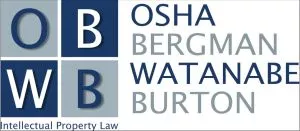- in India
Introduction
The first federal copyright law was written to protect books, charts, and maps. Over time, the scope of protection provided by copyright law has expanded to protect musical compositions, graphic works, sculpture and architecture, and digital creations. This expansion has been necessitated, in part, by the development of new and widely available technologies that aid the creative process. Now, the rapid progress of Artificial Intelligence ("AI") technologies and the proliferation of AI-generated media has motivated new inquiries into the types of content that may be protected by copyright law.
In early 2023, the United States Copyright Office ("USCO") launched an initiative to substantively examine the intersection of copyright law and policy with AI and AI-generated content. As part of this initiative, the USCO published a Notice of Inquiry on August 30, 2023, in the Federal Register formally seeking input from the public. The USCO received feedback from creators, stakeholders, academics, lawyers, and other organizations across all 50 states and from 67 countries worldwide.
The USCO is in the process of publishing a three-part report ("the Report") on copyright law and AI based on these responses. Part I of the Report was published in July 2024 and centered on digital replicas, or realistic but otherwise false representations of people. Part II of the Report, published in January 2025, focused on the copyrightability of outputs generated by AI systems and offered official recommendations to policy makers, law practitioners, and the courts. Part III of the Report, forthcoming later this year, will explore the legal implications of training AI models using material protected by copyright.
In this newsletter, we summarize and highlight notable aspects of Part II of the Report.
Overview
Copyright exists to protect the creative works of humans. In Part II of the Report, the USCO quotes the Supreme Court's explanation, "the author [of a copyrighted work] is . . . the person who translates an idea into a fixed, tangible expression entitled to copyright protection." Cmty. for Creative Non-Violence v. Reid ("CCNV"), 490 U.S. 730, 737 (1989) (emphasis added). However, AI systems can now generate works so sophisticated that they would likely qualify for copyright protection if a human had created them. This raises the question of how the long-held requirement of human authorship should apply to works created with AI assistance.
For the purposes of discussion, the USCO defines an AI system as "software product or service that substantially incorporates one or more AI models and is designed for use by an end-user." End users may deploy AI systems to complete a range of tasks such as generating text or images based on user-provided input. However, the level of human creative input and control over AI systems can vary significantly. For example, in some cases a user may generate an output by providing simple instructions of only a few words. In other cases, a user may provide extensive input that includes their own creations to be modified with AI assistance, such as images, audio, and video. Users may also exercise creativity by iteratively refining AI-generated material, selection, and rearrangement.
The 2023 Notice of Inquiry asked five questions related to the copyrightability of "AI-generated material" that are addressed in Part II of the Report:
- Does the Copyright Clause in the U.S. Constitution permit copyright protection for AI-generated material?
- Under copyright law, are there circumstances when a human using a generative AI system should be considered the "author" of the material produced by the system?
- Is legal protection for AI-generated material desirable as a policy matter?
- If so, should it be a form of copyright or a separate sui generis right?
- Are any revisions to the Copyright Act necessary to clarify the human authorship requirement?
Notably, the answers to these questions depend on how the responder interprets "AI-generated material." Is it any material generated using AI, or only material generated by AI without human involvement and control?
The Level of Human Involvement and Control
Given the existing requirement under copyright law that authors must be humans, the answers to these questions largely turn on the degree of human involvement and control when using AI systems to create. As discussed above, many agree that there is a meaningful distinction between the product of an AI system generated in response to a simple command, and a work produced by detailed and thoughtful interaction with AI as just one of many aspects of the creative process. Therefore, the questions above may be addressed by considering different categories of human involvement with AI systems.
In Part II of the report, the USCO identifies three categories of increasing human involvement: (1) prompts that instruct an AI system to generate an output; (2) expressive inputs from human authors that can be perceived in and influence the AI-generated outputs; and (3) human modifications or arrangements of AI-generated material.
Prompts
The first category identified by the USCO involves user prompts: natural language instructions given to AI systems to produce a specific output or perform a task1.
Most commenters agreed, and the USCO affirmed, that simple prompts do not meet the creative threshold or level of control necessary to protect the resulting output under copyright law. For example, AI-generated output based on a prompt may be likened to a commissioned sculpture: is the author the entity that conceived of it, or the artist that physically created it? In CCNV, the Supreme Court found that even detailed instructions were insufficient to make the conceiving entity the "author," because it was the sculptor that executed his own creative vision to create the work of art. Applied in the context of AI, the "sculptor," is the AI system, not a human being, and so the resulting work is not eligible for copyright protection under the standard interpretation.
In contrast to opinions regarding simple prompts, there is less agreement as to whether the products generated by AI systems in response to highly complex prompts should be protected by copyright. Some commenters argued in favor of protection, noting that detailed prompts can involve many creative decisions similar to those made by a photographer (e.g., defining the pose, lighting, distance to the subject, scenery, etc.). However other commenters emphasized that many widely available AI systems are known to introduce elements that are not specified by prompts and exclude elements that are. Therefore, they argue, AI systems that respond to prompts have a fundamental limit in the control offered to the human author on the final product. Further, some argued that AI systems necessarily engage in a degree of interpretation, no matter the prompt, particularly when translating between different types of media (e.g., processing a text-based prompt to produce an image).
Upon review of the feedback, the USCO suggests that most prompts "essentially function as instructions that convey unprotectable ideas," and do not provide users with sufficient creative control over existing AI systems to claim copyright protection over their resulting output. The USCO illustrates this position by returning to the analogy of a commissioned artist, noting a further distinction in the human hiring party's ability to "oversee, direct, and understand" the contributions of the commissioned artist. By contrast, the USCO contends that users currently lack a comparable ability to oversee or control how AI systems generate content, leaving too much uncertainty about the user's creative influence in the final work.
Beyond prompts, Part II of the Report also identifies a more complex category of user interaction with AI systems: "expressive inputs," where human users contribute original content that can be perceived in, and influence, AI-generated outputs.
Expressive Inputs
AI systems can process and interpret a variety of media beyond written text, including images, audio, and video, to create new works. The USCO notes that expressive inputs of this kind can more easily demonstrate the level of human involvement in AI-generated content. The USCO highlights the registered copyright awarded to Rose Enigma, VAu001528922 (Mar. 21, 2023), where an author submitted a hand-drawn illustration to an AI system along with a short prompt requesting the creation of a new image based on the input image and certain modifications. The applicant disclaimed "any non-human expression" in the final work, that is, the elements added by the AI system, and the Office registered the work with an annotation stating: "Registration limited to unaltered human pictorial authorship that is clearly perceptible in the deposit and separable from the non-human expression that is excluded from the claim." The USCO also cites the widespread use of AI systems in the film industry (e.g., color correction and detail sharpening) and music industry (e.g., Autotune), where AI systems enhance human creations but the resulting works are still easily identified human-authored.
Accordingly, one of the thresholds for copyright protection of AI-generated works, according to the USCO, is when a "human inputs their own copyrightable work, and that work is perceptible in the output." In such cases, the author may be entitled to protection of at least a portion of the output.
The final category of user interaction with AI systems discussed in Part II of the report is the human modification of AI-generated content, which may provide the clearest indication of human authorship in AI-assisted creative works.
Modifications of AI-generated Outputs
Some creators have integrated AI systems and/or AI-generated outputs within larger creative processes, applying their own creative decisions and modifications to media initially produced by an AI system. It is generally accepted, the USCO notes, that such works may qualify for copyright protection, even if the individual elements created by AI would not meet the standard on their own. Commenters further suggested that modification and arrangement of AI-created works of art should not be treated differently from similar modifications or arrangements of preexisting works created by human authors, which have long been eligible for copyright protection.
As an example, the USCO references a copyright awarded for a compilation consisting of human-authored text and AI-generated images in the form of a comic book. The USCO stated that the comic book ("the Work") is "the product of creative choices with respect to the selection of the images that make up the Work and the placement and arrangement of the images and text on each of the Work's pages." U.S. Copyright Office, Cancellation Decision re: Zarya of the Dawn (VAu001480196) at 5 (Feb. 21, 2023).
In creations such as these, the level of human involvement and control is easily discerned, in contrast to the products created by AI systems interpreting prompts or processing expressive inputs. However, the USCO indicates that whether a final product meets the necessary threshold for copyright protection will likely still need to be decided on a case-by-case basis.
Official Recommendations and Conclusion
In view of the foregoing framework for identifying human involvement, the USCO concludes that existing legal doctrines are sufficient to address questions concerning the copyrightability of AI-generated materials. However, proponents of legal reform suggest that updates to copyright law could incentivize the production of new creations using AI systems or otherwise advance knowledge and culture.
In response, the USCO emphasizes that the rapid expansion of AI technologies and AI-generated content indicates that there is no shortage of existing incentives for AI development. Moreover, the USCO argues that copyright law is fundamentally intended to incentivize and support the progress of human authorship. The USCO further cautions that providing legal protection to AI-generated content could risk discouraging and devaluing human creation, given the comparative ease and volume with which AI-generated works can be produced. For similar reasons, sui generis rights are mostly opposed by commentors and the USCO alike: they also risk rewarding non-human creation and undermining the value and purpose of protecting human authorship.
The official USCO recommendations from Part II of the Report are as follows:
1. Questions of copyrightability and AI can be resolved pursuant to existing law, without the need for legislative change.
2. The use of AI tools to assist rather than stand in for human creativity does not affect the availability of copyright protection for the output.
3. Copyright protects the original expression in a work created by a human author, even if the work also includes AI-generated material.
4. Copyright does not extend to purely AI-generated material, or material where there is insufficient human control over the expressive elements.
5. Whether human contributions to AI-generated outputs are sufficient to constitute authorship must be analyzed on a case-by-case basis.
6. Based on the functioning of current generally available technology, prompts do not alone provide sufficient control.
7. Human authors are entitled to copyright in their works of authorship that are perceptible in AI-generated outputs, as well as the creative selection, coordination, or arrangement of material in the outputs, or creative modifications of the outputs.
8. The case has not been made for additional copyright or sui generis protection for AI generated content.
For now, these recommendations appear to largely align with international guidance and commentary. The USCO cites statements and decisions provided by the Korean Copyright Commission and the Ministry of Culture, Sports and Tourism, the Japanese Copyright Subdivision of the Cultural Council, the Beijing Internet Court of the People's Republic of China, and the European Union that predominantly support the recommendations outlined in the Report.
In contrast, the United Kingdom and other former or current commonwealth countries, including Hong Kong, India, and New Zealand, currently include statutory protection (predating the advent of AI) for works "generated by computer in circumstances such that there is no human author of the work." According to the statute, the author of these creations is the "person by whom the arrangements necessary for the creation of the work are undertaken," meaning the person operating the computer. However, it is not yet clear how this statute will be interpreted in view of AI-generated content. Additionally, countries including Canada and Australia have stressed the need for clarity regarding copyright law, a call that has been echoed by various stakeholders worldwide.
Although this is an evolving landscape, these issues will inevitably be clarified, both in the United States and abroad, as disputes regarding AI and copyright are resolved in court. Policymakers will likewise determine whether there is sufficient reason to enact legislative change. In the meantime, the USCO has stated that they will continue assisting the public by updating the relevant sections of the Compendium of U.S. Copyright Office Practices. For our part, we will be closely monitoring developments at the intersection of AI and intellectual property at the USCO, in Congress, and the courts.
Footnote
1. Notably, the USCO and several commenters acknowledged that a sufficiently creative prompt may itself qualify for copyright protection, independent of the AI-generated output it produces.
The content of this article is intended to provide a general guide to the subject matter. Specialist advice should be sought about your specific circumstances.



